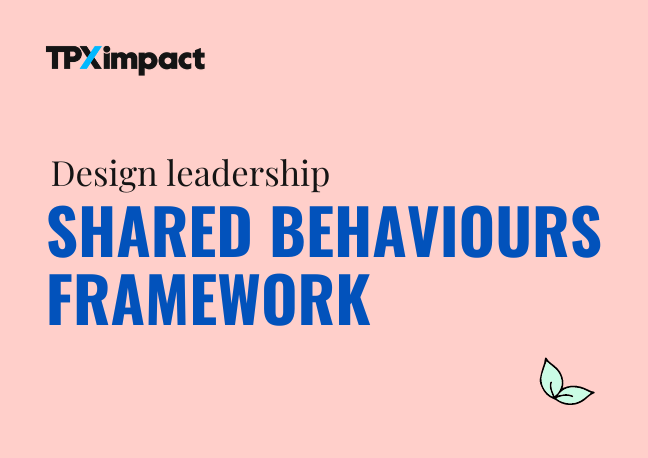The qualities of good design leadership aren’t always well defined or understood at an industry level. This has an impact on progression, with senior designers often unclear on what skills, and especially behaviours, they need to develop. It also contributes to a lack of diversity in leadership roles in the design – when there is less clarity on what makes a good design leader, inherent biases and assumptions invariably take over.
Our investment in design leadership
To support how we grow and run our design teams, we’ve invested in a diverse group of design leaders who each have different strengths. We collectively come together to support and enable our teams while ensuring delivery on projects.
Our wider design leadership community includes Heads of Practices – Design Operations, Design Research, Service Design, Content Design and Interaction and Product Design –, as well as different types of Lead Design and Research roles.
On projects, we all play a variety of roles. We might be:
- directing project work
- coaching and managing teams
- building and supporting design capability or strategy
- doing hands-on delivery of design and research work
- ensuring quality of design in complex programmes
We know that design leadership comes in many shapes. But at its heart, it’s bound together by behaviours.
A framework for design leadership behaviours
Working together, we’ve created a simple framework. This supports consistency in how we talk about design leadership with our teams. It enables senior members of our design practices to understand where they might need to develop to progress into leadership roles, and current design leaders to grow further into their roles.
The framework consists of three pillars of core behaviours.
1. Design direction
- shaping good design and research approaches
- proactively guiding these processes in delivery
- supporting clients and colleagues to work at a manageable pace
2. Design assurance
- ensuring the quality of good design and research in delivery
- ensuring delivery of work matches expectations around quality and timelines
- being comfortable with ambiguity, helping teams to manage risk and work with unknowns
3. Design communication
- articulating and advocating for good design
- being able to describe and communicate future states for services and solutions
- bringing together different perspectives, while holding and communicating a compelling story for the work.
This then expands into a further set of behaviours and explanations for each area – you can read more about these in the full version of the framework.
Join our design leadership community
By focusing on behaviours, their outcomes, and the values that underpin them, our intention is to create space for a diverse leadership team, both in lived experience and leadership styles while helping us to remain authentic and impactful.
Our team is currently hiring in our design leadership community for the following roles:
- Design Director
- Lead Service Designer
- Lead Interaction & Product Designer
- Lead Content Designer
- Lead Design Researcher
If you are interested in learning more about these roles do reach out to myself, or Ben Holliday (Chief Designer) for a chat.

Design leadership
View the full frameworkOur recent design blog posts
Transformation is for everyone. We love sharing our thoughts, approaches, learning and research all gained from the work we do.
-

-

Naming services in complex situations
Read blog post -

Using inclusive research approaches with Blood Cancer UK
Read blog post -

Designing for users who don’t exist (yet)
Read blog post

